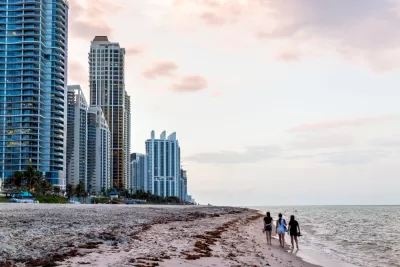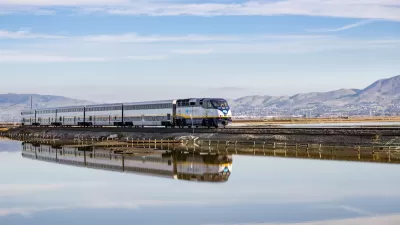Predicting the future of challenges facing cities isn't very hard when the future is already staring cities right in the face.

"[A]bsent a world-changing event or discovery, we have a pretty good idea how the challenges of 21st century cities might line up," according to an article by Anthony Flint.
Armed with that relative certainty, Flint sets out to detail the seven items on a to-do list for cities to achieve in the next 20 years. The list includes confronting climate change, dealing with affordable housing, managing seismic demographic shifts, and re-engineering cities to embrace new technology.
On confronting climate change, Flint writes:
Adaptation and resilience measures will be in full swing, and the most problematic coastal areas will be returned to their natural state. Meanwhile, cities will continue their role as leaders in mitigation: converting to renewable power sources, making all new construction zero-carbon and retrofitting older buildings, and reaping the low-emission benefits of walkable, compact, transit-served urbanism. The importance of land use and sustainable policies for land will be ever more apparent. Climate will be the central occupation of political leaders, planners, and the private sector.
The skills and history of planning will inform almost every one of the seven items on Flint's to-do list.
FULL STORY: The To-Do List for Cities 20 Years From Now

Maui's Vacation Rental Debate Turns Ugly
Verbal attacks, misinformation campaigns and fistfights plague a high-stakes debate to convert thousands of vacation rentals into long-term housing.

Planetizen Federal Action Tracker
A weekly monitor of how Trump’s orders and actions are impacting planners and planning in America.

San Francisco Suspends Traffic Calming Amidst Record Deaths
Citing “a challenging fiscal landscape,” the city will cease the program on the heels of 42 traffic deaths, including 24 pedestrians.

Defunct Pittsburgh Power Plant to Become Residential Tower
A decommissioned steam heat plant will be redeveloped into almost 100 affordable housing units.

Trump Prompts Restructuring of Transportation Research Board in “Unprecedented Overreach”
The TRB has eliminated more than half of its committees including those focused on climate, equity, and cities.

Amtrak Rolls Out New Orleans to Alabama “Mardi Gras” Train
The new service will operate morning and evening departures between Mobile and New Orleans.
Urban Design for Planners 1: Software Tools
This six-course series explores essential urban design concepts using open source software and equips planners with the tools they need to participate fully in the urban design process.
Planning for Universal Design
Learn the tools for implementing Universal Design in planning regulations.
Heyer Gruel & Associates PA
JM Goldson LLC
Custer County Colorado
City of Camden Redevelopment Agency
City of Astoria
Transportation Research & Education Center (TREC) at Portland State University
Jefferson Parish Government
Camden Redevelopment Agency
City of Claremont





























